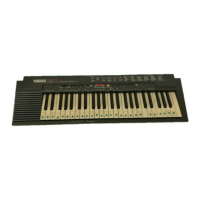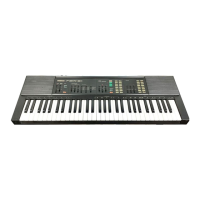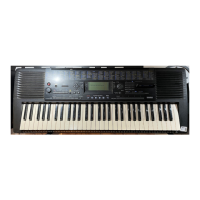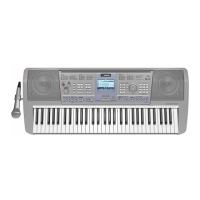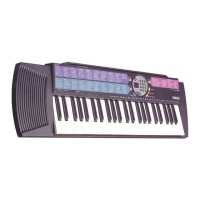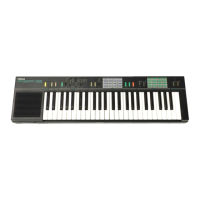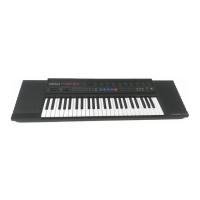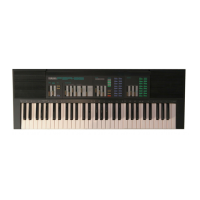
Do you have a question about the Yamaha PortaTone PSR-32 and is the answer not in the manual?
| Type | Portable Keyboard |
|---|---|
| Brand | Yamaha |
| Model | PortaTone PSR-32 |
| Number of Keys | 49 |
| MIDI | No |
| Demo Songs | Yes |
| Display | LED |
| Effects | Reverb |
| Power Supply | AC adapter or batteries |
| Polyphony | 8-note |
How to install batteries for power.
Using external AC or car battery adapters.
Power switch, master volume, tempo, and pitch controls.
Controls for setting rhythm speed and selection.
Auto Bass Chord and Orchestra voice selections.
Custom Drummer, Fill-in, Duet, Sustain, Start/Stop.
Introduction to the keyboard's orchestra sounds.
How to turn the keyboard power on.
Setting the master volume level.
Selecting a sound from the orchestra section.
Selecting different sounds from the orchestra section.
Enabling note sustain for longer sound.
Introduction to the built-in rhythm accompaniment.
Selecting a rhythm pattern.
Initiating the selected rhythm.
Control rhythm volume, tempo, and patterns.
Visual metronome for tempo confirmation.
Insert drum solos or intros.
Introduction to automatic chord accompaniment.
Play chords with bass and rhythm accompaniment.
Layering harmony onto the melody.
Control overall level and speed.
Choose voice and variation combinations.
How to disable the feature.
How to play various chords with one finger.
Playing chords for automatic accompaniment.
Layering harmony onto the melody.
Play your own bass line.
Use different voices for left/right hands.
Fine-tune keyboard pitch.
Introduction to the Custom Drummer feature.
Listen to percussion sounds.
Step-by-step guide to create rhythms.
How to input bass drum, snare, hi-hat.
How to accentuate percussion sounds.
How to cancel and re-input.
How to finish and listen to programmed rhythms.
Examples of other rhythm patterns to program.
Connecting power sources and audio output.
For private listening during practice.
Connecting power sources and audio output.
Connecting a pedal and listing optional accessories.
Guidelines for safe and proper operation.
Avoiding extreme temperatures and humidity.
Proper methods for cleaning and storing the instrument.
Key count, range, and list of instrument sounds.
Details on rhythm patterns and supported effects.
Auto bass chord and pitch control specifications.
Power output, speaker size, and voltage ratings.
Physical size, weight, and regulatory compliance.
Location and importance of the serial number.
Details on warranty applicability and service policies.
